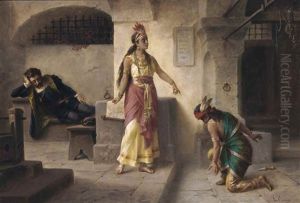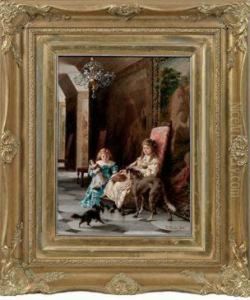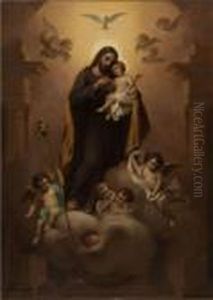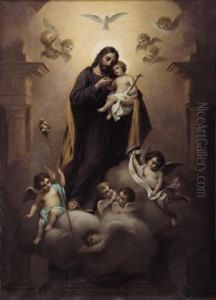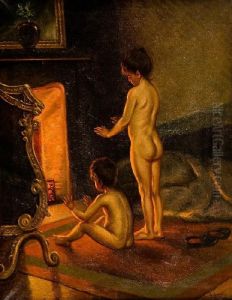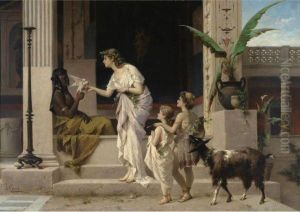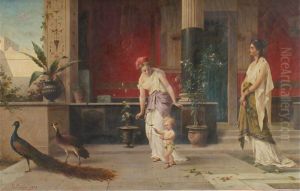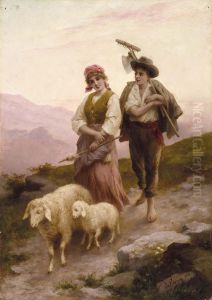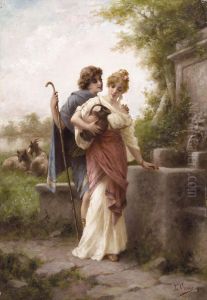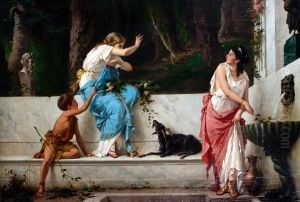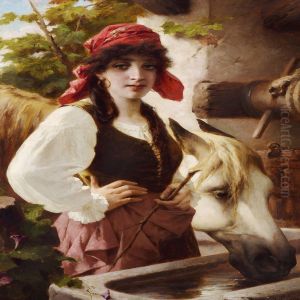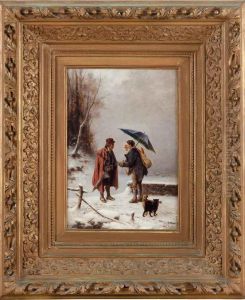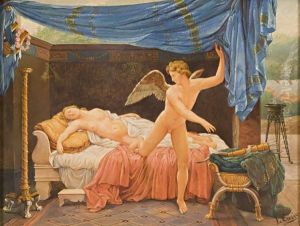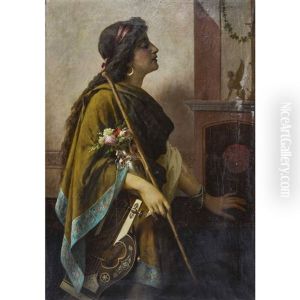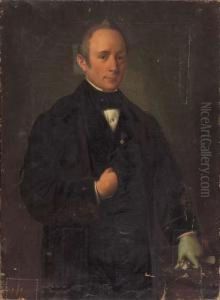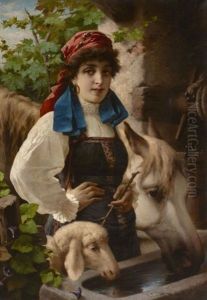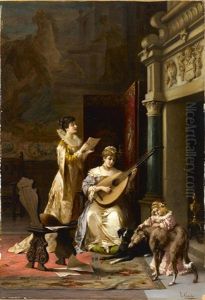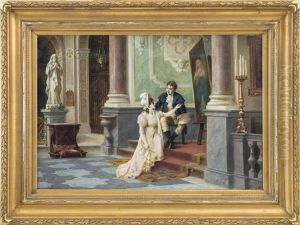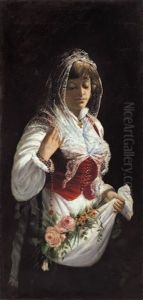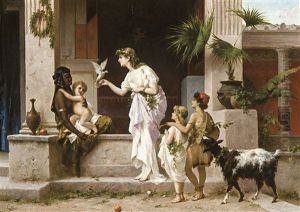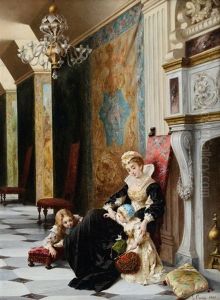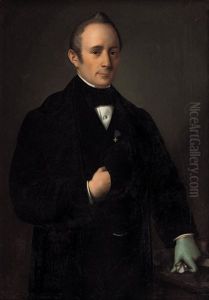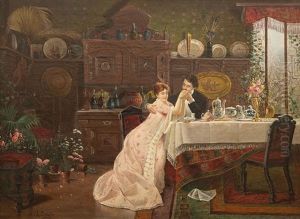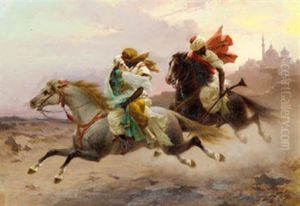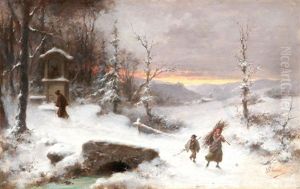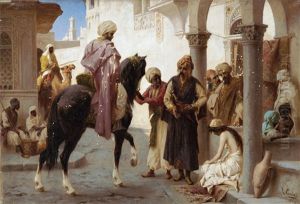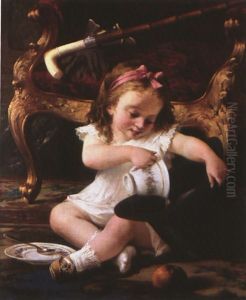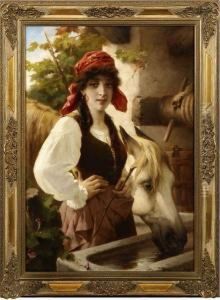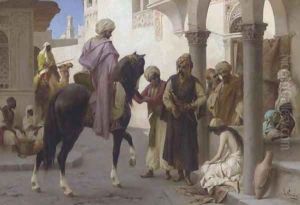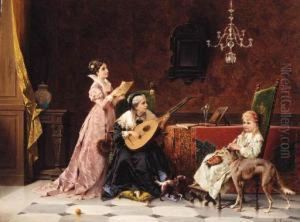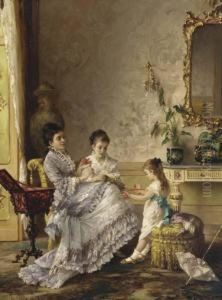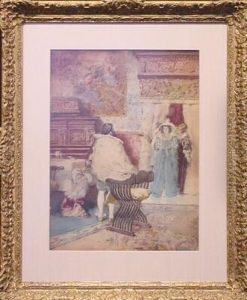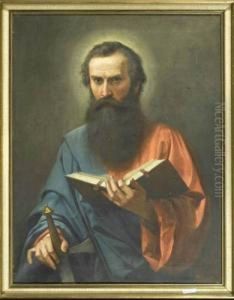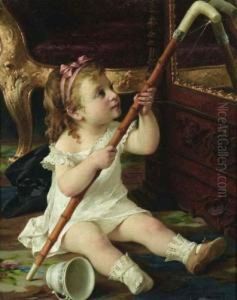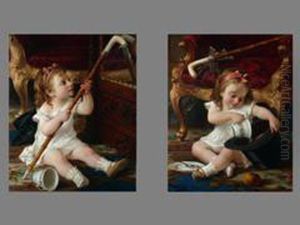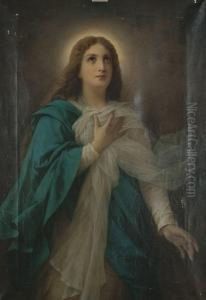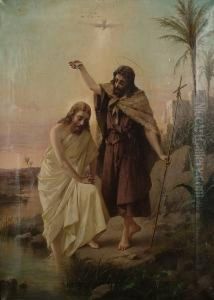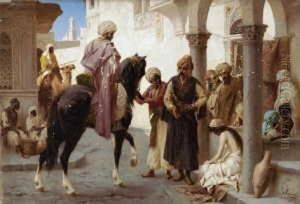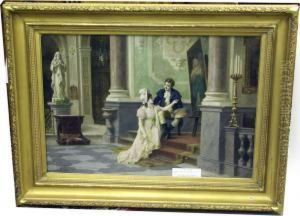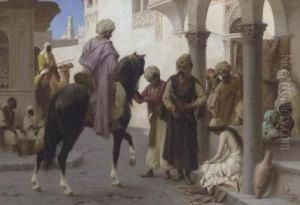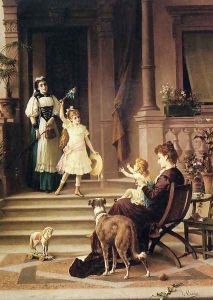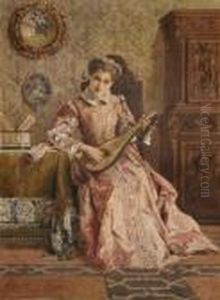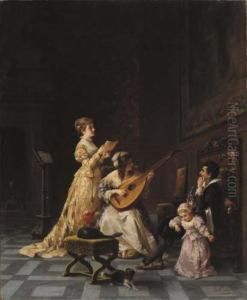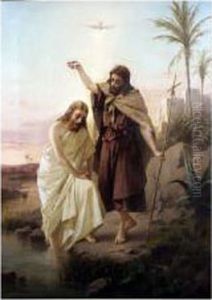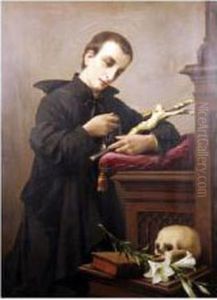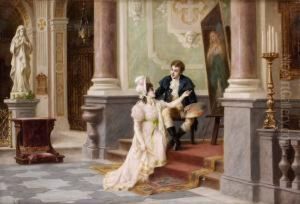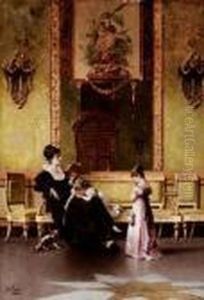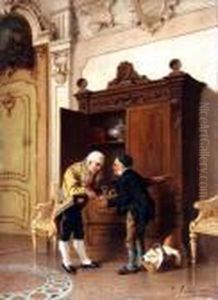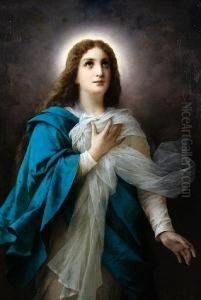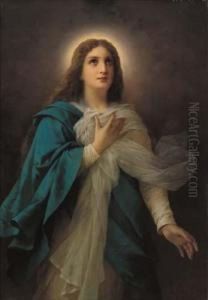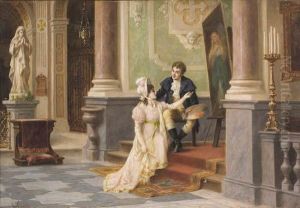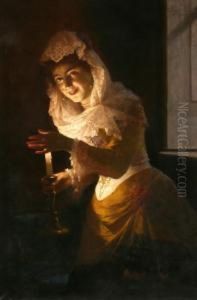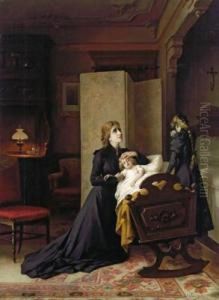Luigi Crosio Paintings
Luigi Crosio was an Italian painter who lived during the 19th century and is best known for his works in the academic and historical painting traditions. Born on July 8, 1835, in Alba, Piedmont, Crosio initially trained at the Royal Albertina Academy in Turin under the guidance of artists like Carlo Arienti and Andrea Gastaldi, who were prominent figures in the Italian art scene at the time.
His early works were influenced by the Romantic movement, but he gradually shifted towards a more academic style, which was characterized by its focus on historical accuracy and classical themes. Crosio's paintings often included religious subjects, genre scenes, and historical events, which were popular among the bourgeois clientele of the period.
One of Crosio's most famous works is 'The Refusal of St. Peter,' which depicts the biblical scene of Saint Peter denying Jesus. This painting demonstrates Crosio's mastery of the human figure and his ability to convey complex emotions through his subjects. He was also known for his work 'The Roll Call of the Last Victims of the Terror,' which reflects the tumultuous times of the French Revolution.
In addition to historical and religious paintings, Crosio also created a number of decorative works, including frescoes for churches and public buildings. His style was characterized by elaborate detail, vibrant color, and a clear narrative structure.
Luigi Crosio's contributions to the art world were recognized in his time, and he was commissioned by various patrons, which allowed him to enjoy a successful career. However, compared to some of his contemporaries, Crosio's fame did not persist as strongly into the modern era. He passed away on January 1, 1915, in Turin, leaving behind a legacy of work that reflects the academic traditions of his time and provides insight into the cultural and historical contexts of the period in which he lived.
